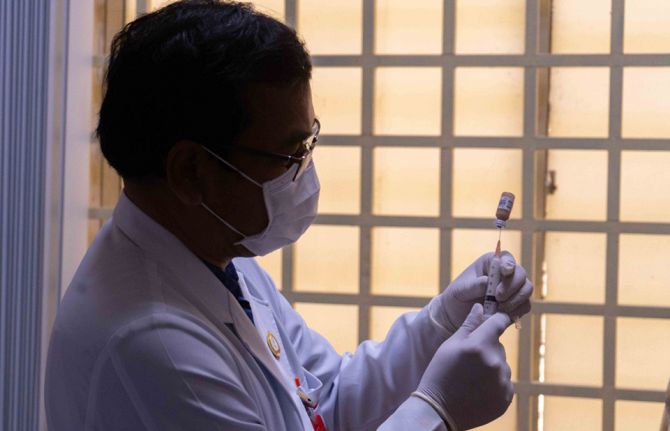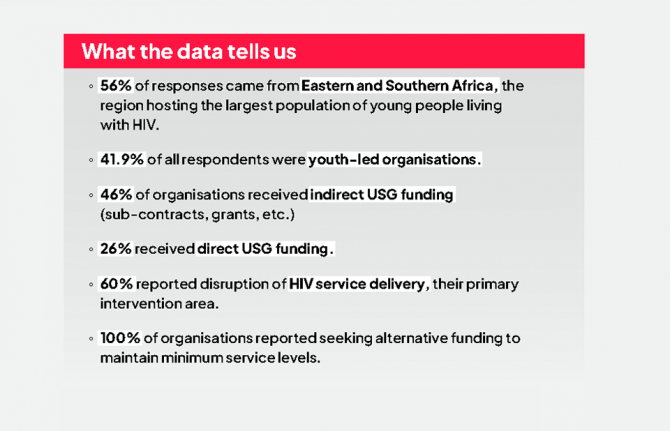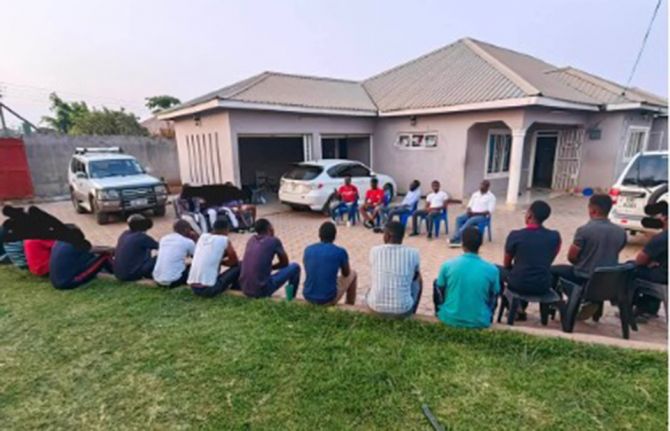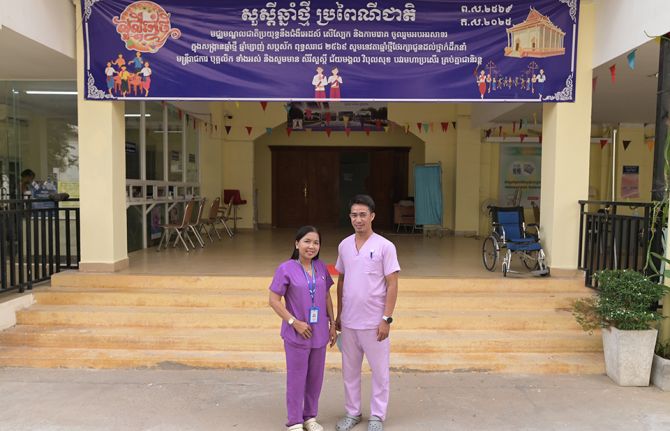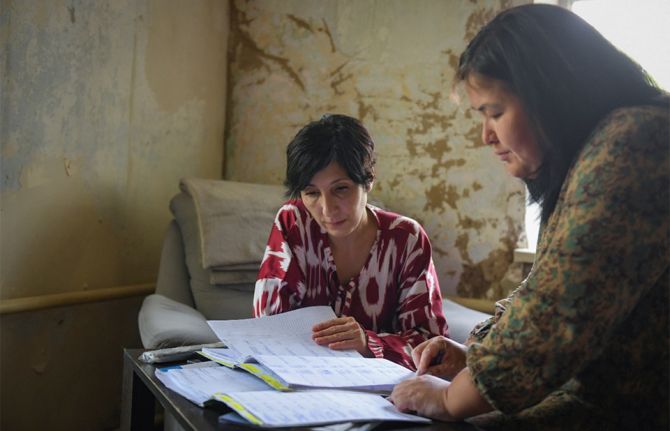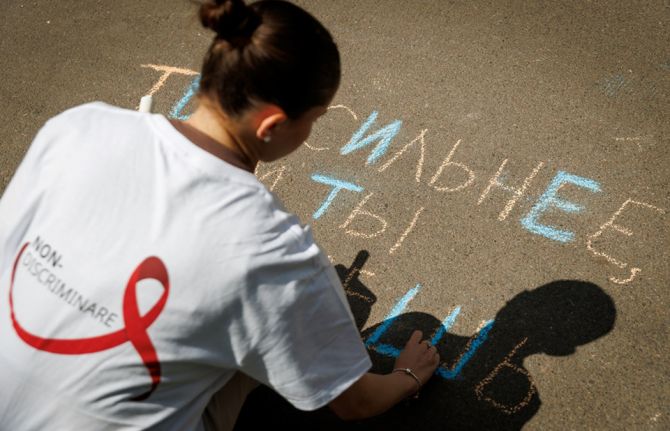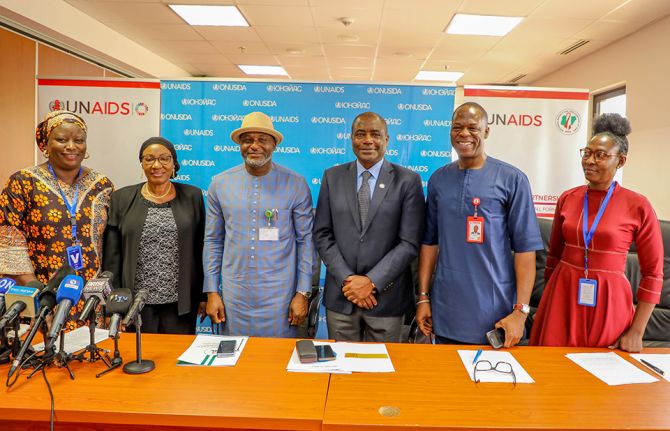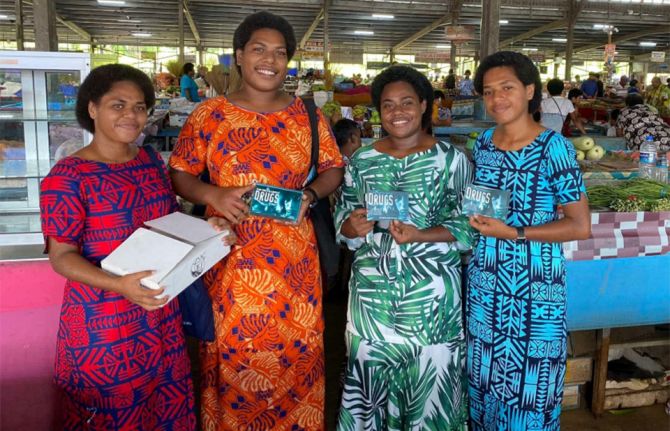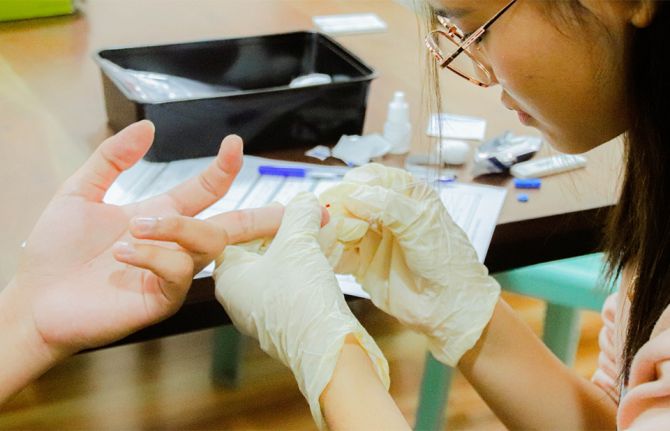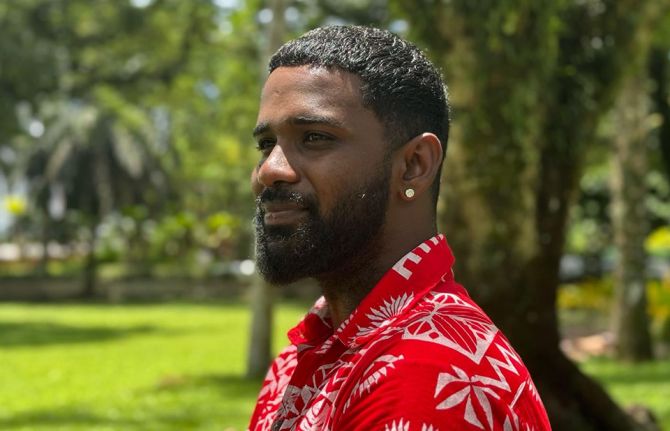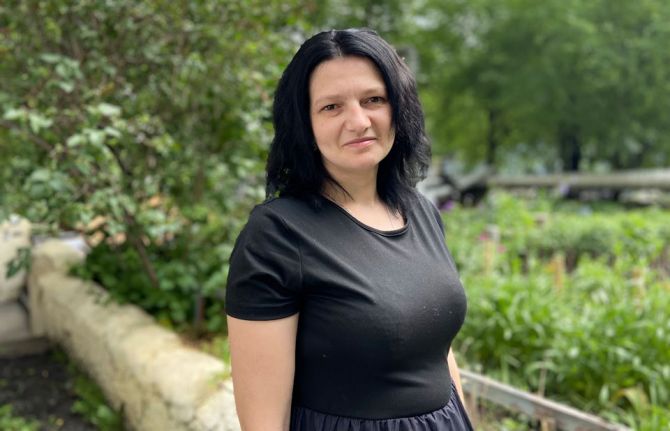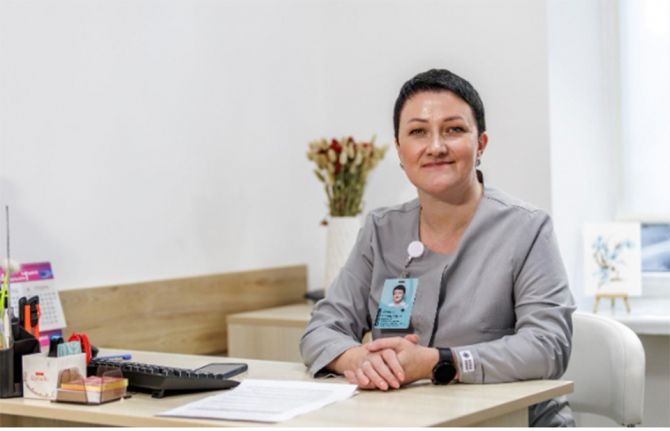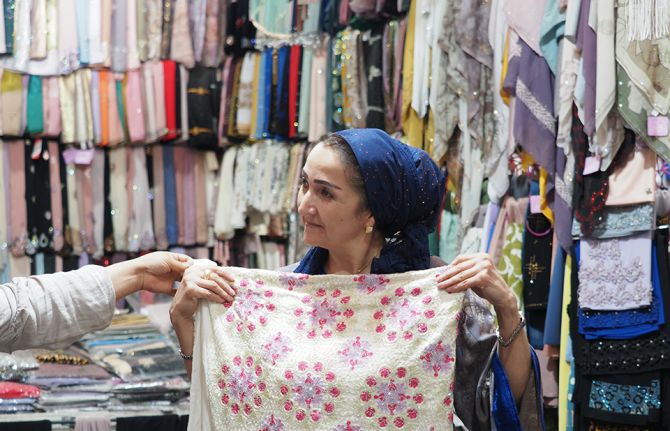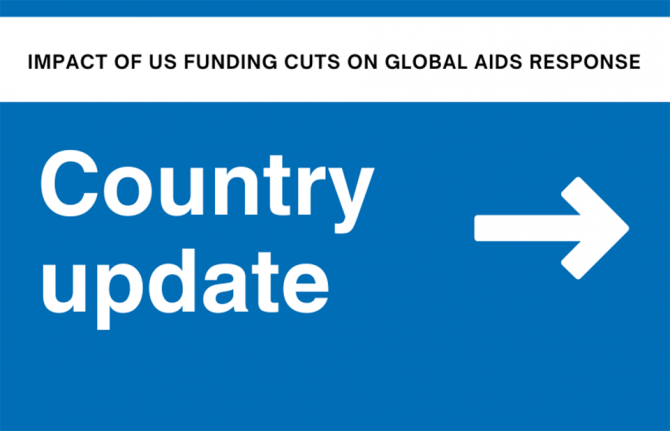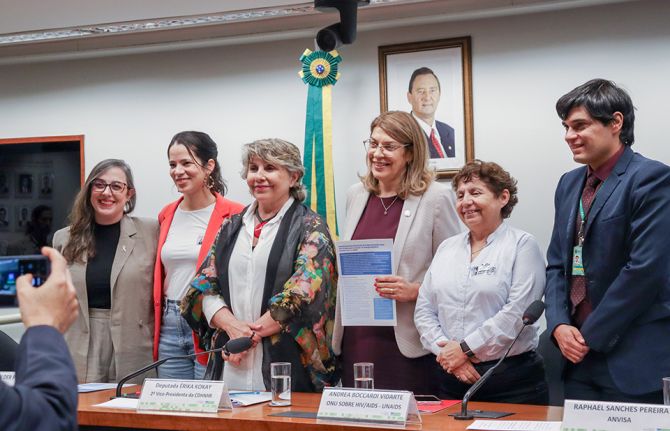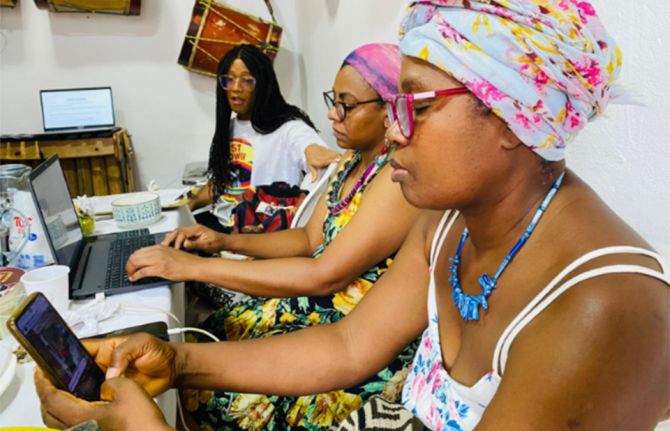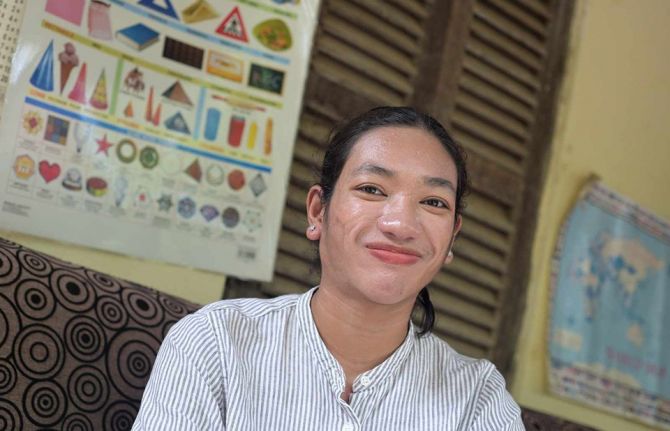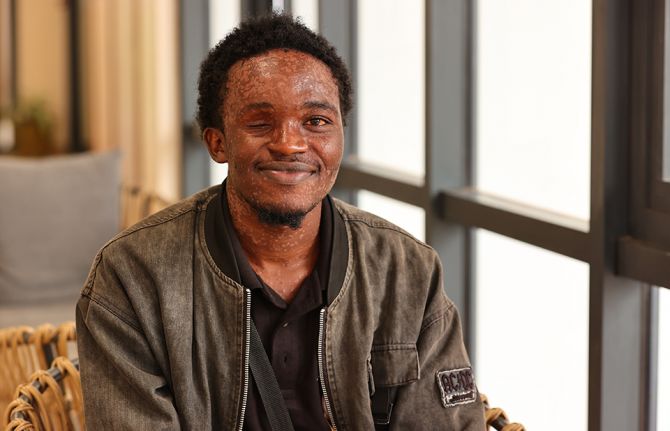
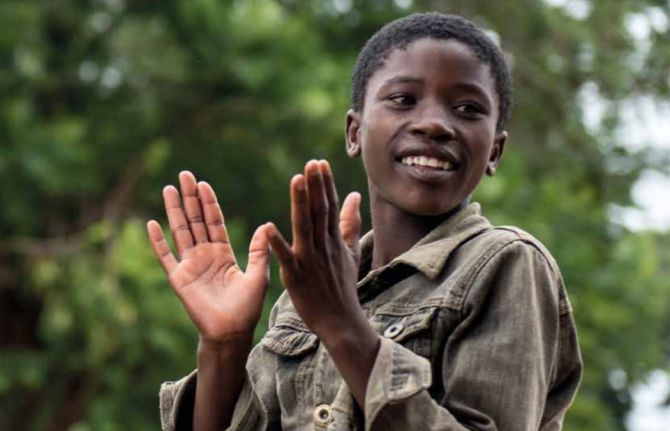
Feature Story
Ending the AIDS epidemic among children, adolescents and young women
27 April 2018
27 April 2018 27 April 2018Ending the AIDS epidemic among children, adolescents and young women requires ambitious targets and a Super-Fast-Track approach. Building on the successes of the Global Plan towards the elimination of new HIV infections among children by 2015 and keeping their mothers alive, UNAIDS, the United States President’s Emergency Plan for AIDS Relief (PEPFAR) and partners* launched Start Free Stay Free AIDS Free in 2016 to provide a framework for the urgent work ahead.
Start Free Stay Free AIDS Free prioritizes action in 23 countries** that account for 87% of new HIV infections among children aged 0–14 years and approximately 87% of all children and adolescents living with HIV globally. In 2016, 2.1 million children were estimated to be living with HIV.
In its first progress report, Start Free Stay Free AIDS Free reflects on the achievements made during the first year of implementation and highlights areas where urgent action is needed.
“The world is on the Fast-Track to eliminating new HIV infections among children and ensuring that their mothers are alive and healthy, but we need to do more to ensure that all children living with HIV have access to treatment immediately,” said Michel Sidibé, Executive Director of UNAIDS.
The report shows that globally in 2016, there were 160 000 new HIV infections among children and that 140 000 occurred in the 23 priority countries. Although there was an overall decline in new HIV infections, the decline was at a much slower rate than in previous years.
The report highlights concerns around new HIV infections among young women and girls. In 2016, around 200 000 adolescents between the ages of 15 and 19 years were newly infected with HIV in the 23 priority countries, 72% of whom were young women.
Most—more than 70%—of all new HIV infections among young people are in sub-Saharan Africa, which also has the fastest growing youth population in the world.
“A high number of new HIV infections among adolescents and a fast-growing population could make for an HIV explosion among young women in Africa,” said Deborah Birx, United States Global AIDS Coordinator and Special Representative for Global Health Diplomacy. “The United States Presidents Emergency Plan for AIDS Relief is driving harder and smarter to prevent HIV infections and ultimately help end AIDS among children, adolescents and young women. Every person deserves the chance to survive, thrive and pursue their dreams.”
Gains seen in access to treatment
The report shows that while important gains have been made in access to antiretroviral therapy for pregnant women living with HIV, much more needs to be done to reach children.
In 2016, around 78% of pregnant women living with HIV had access to antiretroviral therapy in the 23 priority countries.
Start Free targets
Reduce new HIV infections among children to 40 000 by 2018.
Reach and sustain 95% of pregnant women living with HIV with lifelong HIV treatment by 2018.
Stay Free targets
Reduce the number of new HIV infections among adolescents and young women to less than 100 000 by 2020.
Provide voluntary medical male circumcision for HIV prevention to 25 million additional men by 2020 globally, with a focus on young men aged 10–29 years.
AIDS Free targets
Ensure that 1.6 million children (0–14 years) and 1.2 million adolescents (15–19 years) living with HIV have access to antiretroviral therapy by 2018.
The increase in the roll-out and uptake of antiretroviral therapy during pregnancy and throughout breastfeeding is estimated to have averted around 270 000 new HIV infections among children in 2016 alone.
The numbers of children on treatment has also increased, but not on a big enough scale. In 2010, only 17% of children aged 0–14 years had access to treatment. By 2016, that had risen to around 43%, with around 920 000 children accessing antiretroviral therapy. Although this is a marked improvement, access to treatment for children still falls far behind access for adults. In 2016, around 54% of adults living with HIV had access to treatment.
The report cites multiple reasons for the slow growth of access to treatment for children, including poor testing rates. Only nine of the 23 priority countries managed to test and diagnose 50% or more of children who were exposed to HIV in 2016. There are particularly low rates of early infant diagnosis in the first two months of life, when it is most important to test, as HIV-related mortality is at its highest. Without access to testing and treatment, half of all children living with HIV will die before their second birthday.
Ways forward
The report offers a set of important actions countries can take to eliminate new HIV infections among children, to test and diagnose children and young people who may have been exposed to HIV and to ensure that children and young people access HIV prevention, quality medicines and age-appropriate sexual and reproductive education and care and support throughout their lives, free from stigma and discrimination.
Other important actions include accelerating new medicines and diagnostics, promoting community engagement and services, voluntary medical male circumcision, access to information on sexual and reproductive health and access to pre-exposure prophylaxis for young people at a higher risk of HIV.
“The future for children and adolescents depends on actions we take collectively today,” said Mr Sidibé.
The latest estimates, for the end of 2017, will be released in July 2018 and will provide further insight into the progress of Start Free Stay Free AIDS Free.
* United Nations Children’s Fund, World Health Organization and the Elizabeth Glaser Pediatric AIDS Foundation.
**Angola, Botswana, Burundi, Cameroon, Chad, Côte d’Ivoire, Democratic Republic of the Congo, Ethiopia, Ghana, Kenya, Lesotho, Malawi, Mozambique, Namibia, Nigeria, South Africa, Uganda, United Republic of Tanzania, Swaziland, Zambia and Zimbabwe.
Start Free Stay Free AIDS Free
Related

Feature Story
Reaching people who inject drugs with HIV services in Finland
27 April 2018
27 April 2018 27 April 2018The Aurora Day Centre in Helsinki, Finland was founded in December 2000 in response to a sharp increase of new HIV infections among people who inject drugs. The centre had an immediate impact and dramatically increased the number of people linked to treatment and care.
During a visit to Helsinki the Executive Director of UNAIDS, Michel Sidibé, met with staff at the centre to learn how their services are supporting people in the city.
According to Day Centre staff, prior to the opening 53% of people who inject drugs who were living with HIV were retained in care—by 2014, 90% were retained in care and accessing antiretroviral therapy.
The number of people who inject drugs who were newly infected with HIV was reduced by half between 2007 and 2016 in Finland – source ECDC
The main aim of the centre is to prevent new HIV infections among people who inject drugs and to provide harm reduction services including opioid substation therapy. The centre currently has around 77 clients, with an average age of 50 years old. Many became infected with HIV before harm reduction services became available in Finland.
“The good thing for me is that the clinic is always here,” said Leila, who uses the services at the centre.
People over 50 years of age account for more than 20% of new HIV diagnosis in Finland. – source HIV point
The centre provides holistic support including medical treatment, health guidance, food and mental and social support.
“By bringing the services to the community and adopting a multidisciplinary approach we have shown that we can successfully reach people who inject drugs who are living with HIV,” said Matti Ristola, Head of HIV Services at the Aurora Day Centre.
2015 was the first year with no AIDS deaths in Finland – source HIV point
“The Aurora Centre in Helsinki is living proof that it is possible to reach 90-90-90 and zero new infections among people who inject drugs when there is political commitment and community engagement,” said Mr Sidibé.
Finland’s Eastern neighbour, Russia, has the third largest number of annual new HIV infections in the world. The proximity between Helsinki and St. Petersburg means that people move easily between the two cities.
There are less than 200 new HIV diagnoses annually in Finland – source HIV point
The visit to the Aurora Day Centre took place in the context of a series of meetings with Finnish decision-makers and politicians. Earlier in the day, Mr Sidibé met Anne-Mari Virolainen, the Minister of Foreign Trade, Annika Saarikko, the Minister of Family and Social Services, Finnish parliamentarians and civil society organizations.
Region/country
Related

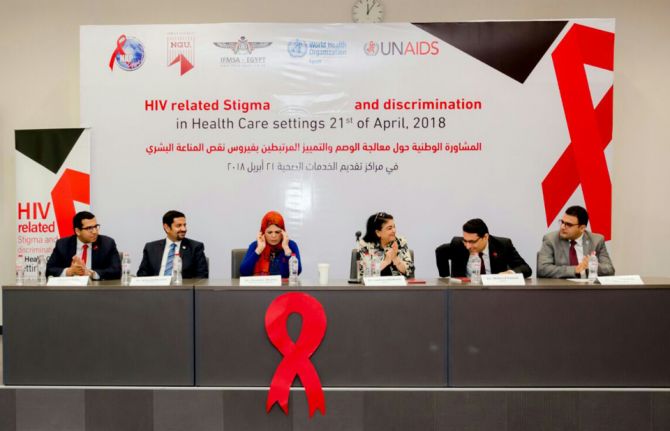
Feature Story
Egyptian medical students meet to address stigma and discrimination in health-care settings
25 April 2018
25 April 2018 25 April 2018Stigma and discrimination and other human rights violations occur in health-care settings worldwide, barring people from accessing health services or enjoying quality health care. Such stigma and discrimination further increases the vulnerability of people living with and affected by HIV.
To discuss this problem, nearly 300 Egyptian medical students, representing 18 universities across Egypt, met with representatives of academia, civil society, the government and the Egyptian Medical Syndicate. With support from UNAIDS, the Egyptian branch of the International Federation of Medical Students’ Associations held a one-day consultation on HIV-related stigma and discrimination in health-care settings on 21 April in Cairo, Egypt.
“People living with HIV should have equal rights and opportunities. Denial of access to health-care services is unacceptable. Through this consultation, we aim to inform our national strategy with new interventions for addressing stigma and discrimination,” said Walid Kamal, the National AIDS Programme Manager for Egypt.
During the consultation, the participants took stock of the progress made in addressing stigma and discrimination and decided to hold an ongoing dialogue to identify actions to address stigma and discrimination in health-care settings.
“We are witnessing an unprecedented opportunity for addressing discrimination in health-care settings with political support and programmatic vision. While resources are scarce, we count on the support of medical students as leaders of tomorrow and the power of volunteerism to address this issue,” said Ahmed Khamis, the UNAIDS Country Manager for Egypt.
The participants agreed that accountability mechanisms need to be in place to monitor and evaluate interventions, ensuring that proper actions are taken by the relevant authorities to address rights violations in health-care settings.
“Medical ethics is a must among health-care providers. The Egyptian Medical Syndicate is organizing workshops and conferences to enforce ethics among health-care providers. I would like to remind you all of the rights of patients,” said Sherine Ghaleb, representative of the Egyptian Medical Syndicate.
The participants agreed to prioritize launching the Ministry of Health and Population’s stigma-free policy and integrating HIV-related stigma and discrimination in the module on ethics taught to all doctors who graduate in Egypt. They also agreed to give access to the accountability and investigation mechanism of the Egyptian Medical Syndicate to civil society organizations and people living with HIV in order to report violations and to roll out information on post-exposure prophylaxis in the curricula of medical schools.
The recommendations made during the consultation were endorsed by the National AIDS Programme and will be included in Egypt’s road map for addressing HIV stigma and discrimination in health-care settings. Progress of the road map will be monitored by a group that includes a strong representation from people living with HIV.
Region/country
Related

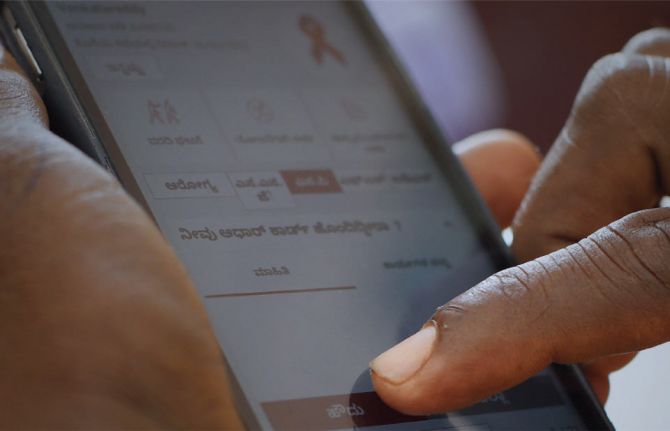
Feature Story
Mobile phones provide massive potential to move towards e-health systems
26 April 2018
26 April 2018 26 April 2018Shiv Kumar, from Swasti Health Catalyst in India, decided to build a mobile and web application called Taaras (rapid progress). He had watched peer educators work with sex workers in Bangalore, India, and realized that he could make their jobs a lot simpler and more efficient. The south-east Indian city has become a major hub and, as a result, the population has boomed, as have sex workers.
After seeing outreach workers, mostly former sex workers, lugging notebooks and jotting down information and recalling appointments and treatment pickups, he created an app that helps with data collection. “Icons and swipes allow outreach workers to enter all sorts of stuff and swipe and pick up where they left off,” Mr Kumar said. They can also text multiple recipients with reminders and invitations.
“Outreach can no longer be a one-way street. You have to engage the patient,” he said.
The app rolled out in five Indian states in English as well as four regional languages. Since its debut in March 2016, there are now more than 400 users following about 120 000 sex workers.
Bangalore outreach worker Natranity said that she has a lot less paperwork to deal with. “All the data of a particular person is now in one place, versus five or six registers that I had to consult,” she said. Her colleague, Abdul, agreed, “I see about 10 to 15 people a day and what saves me a lot of time is not asking the same questions over and over again, because I can consult their profile.”
The phones had their limits, they explained. “At the initial stage, it’s important to build trust to avoid any discomfort in case they think we are taking photos or recording them,” Natranity said.
Prachi Patel, a technology developer at Swasti, sees Taaras as a bridge to an overall solution. “The app is a helper; outreach workers still do all the talking,” she said. A by-product of the app has been higher engagement with sex workers and an increase in reporting incidents of violence. For confidentiality, the app has a stress password that scrambles the data in the event that someone tries to access the information.
UNAIDS Senior Adviser Philippe Lepère commends such efforts and believes e-health has a huge potential. Not only can it strengthen health systems, it also empowers people to manage their own care. Referring to the World Health Organization’s Guidelines on the use of antiretroviral drugs for treating and preventing HIV infection: recommendations for a public health approach, he said that they advocate using text messages to remind people to take their treatment and encourage newly diagnosed people to seek out services.
For this to work, however, he stressed the importance of confidentiality and respect of the user. “Receiving an HIV-related SMS can have drastic consequences in some communities,” he explained. That's why, he said, the content and the frequency have to be ironed out beforehand. “Most importantly, it’s urgent to shift from pilot studies to a larger implementation of programmes at a sufficient scale that can then be integrated within health systems,” Mr Lepère said.
“In certain countries, digital apps have flooded the market and the government has no way of accessing the data or doing any quality control,” he said.
Hani Eskandar, from the International Telecommunications Union, definitely sees mobile phones as paving the way towards universal health coverage.
But, in his view, e-health systems are far from a reality. “Countries have not yet grasped the benefits of this, because they are still focused on vaccines and building hospitals rather than outreach,” he said. He is pushing for governments to rebuild infrastructures that integrate digital platforms.
“It's simple,” he said. “We need for mentalities to change at all levels and stop thinking that the phone is just a gadget.”

Feature Story
UNAIDS World Cup for Ending AIDS and Discrimination kicks off in the Russian Federation
18 April 2018
18 April 2018 18 April 2018Russian and international football legends and Russian players living with HIV joined forces on 17 April to play the first football match of the UNAIDS World Cup for Ending AIDS and Discrimination. International and national football stars draw attention to the stigma faced by people living with HIV and demonstrated the value of goodwill, solidarity, and human values towards ending stigma and discrimination.
The match took place in Moscow on the eve of the opening of the Sixth Eastern Europe and Central Asia AIDS Conference. This was the first of a series of matches to be held with support from FIFA in several different countries in the lead up to the 2018 World Cup which will be held in the Russian Federation from 14 June to 15 July 2018. The initiative highlights the need for zero discrimination on the basis of race, nationality or HIV status, both on and off the pitch.
The Russian FC “Rosich” team was led by its captain, Deputy Prime Minister and Chairman of the Organizing Committee for the FIFA World Cup 2018, Arkady Dvorkovich. Team members included the Minister of Energy, Alexander Novak, the former Russian international and FIFA Anti-Discrimination Officer for the 2018 World Cup, Alexey Smertin, as well as former Russian internationals Dmitry Bulykin, Roman Shirokov, Evgeny Aldonin, Dmitry Sennikov, Oleg Kornaukhov, Marat Makhmutov, Vladimir Leonchenko and Roman Berezovsky.
Michel Sidibe, UNAIDS Executive Director, coached the UNAIDS “Red Ribbon” team, which was captained by former Cameroon international Samuel Eto’o. The Red Ribbon team featured former Senegal international, Abdoulaye Diagne-Faye, former French and Martinique international, Julien Faubert, former French under-21 international, Florent Sinama-Pongolle, former Nigerian international, Peter Odemwingie, former Moroccan international, Jaouad Zairi, Brazilian-born former Bulgarian international, Marcelo da Costa, former Palestinian women international and FIFA official, Hone Thalidjieh, and former Madagascar international, Alister Veerasamy.
Quotes
“I think the AIDS conference is a good basis for intensifying the efforts against HIV in Russia and worldwide. We are happy to contribute to the response by attracting football players, politicians and other famous people. I hope that our efforts will have an impact in preventing discrimination in any sphere.”
“Football is more than just a game. It is a vehicle for connecting people and building a bold social movement for change. It is an honour to launch the UNAIDS World Cup for ending AIDS and Discrimination campaign together with partners from the Russian Government, the FIFA World Cup 2018 and international football stars here in Moscow.”
“We perceive football as much more than simply a game of 90 minutes of play. It also brings very important feelings of respect, fraternity and togetherness into our lives. The simple fact that Russian and international players together with Russian HIV positive players have chosen to play in this match clearly shows that we stand united in working towards achieving zero discrimination regardless of race, colour, faith, gender or HIV-status. We will do everything we can to make that all the players and fans coming to Russia for the FIFA World Cup 2018 feel welcome, at ease and at home.”
“I am very happy to be back to this wonderful country, to this amazing city. It is an honour for me to be engaged in this noble work of ending AIDS and against discrimination.”
Region/country
Related


Feature Story
Thank You, Mrs Bush
18 April 2018
18 April 2018 18 April 2018By Tom Rosshirt — Originally published in Creators Syndicate on 20 June 2012
My brother Matt died of AIDS 26 years ago today, passing away in his bed in my parents' home in Houston.
It was a benighted time for people with AIDS. There were no antiretrovirals then. There was nothing much you could do for an AIDS patient but hold his hand. And many people still thought you could get AIDS by touching. My parents knew of individuals who'd been fired from their jobs for volunteering for AIDS organizations. That's how crazy the fear was.
As Matt was dying, we were befriended by a man named Lou Tesconi, a volunteer from the local AIDS organization. Lou came by to visit with Matt and to offer whatever service and kindness he could to my mom and dad.
Shortly after Matt died, Lou began studies to become a Catholic priest. Within the year, he was diagnosed with AIDS and kicked out of the seminary. Lou was a lawyer by training and temperament. He appealed the judgment to a Catholic bishop, who then asked Lou to found and head a ministry for people with AIDS. It was called Damien Ministries and was established in a poor part of Washington, D.C.
In early 1989, when the country was still very ignorant and fearful of AIDS, Lou got a call from the White House. First lady Barbara Bush was planning to visit Grandma's House, a home for infants with AIDS. It was one of the very first outings in her tenure as first lady, and Lou was asked to join a team of people to brief her privately before the event.
During the briefing, Lou told me later, he said: "Mrs Bush, it is a fantastic thing that you are holding these babies with AIDS. But the country sees them as innocent and the rest of us with AIDS as guilty. The whole suffering AIDS community needs a collective embrace from you today."
Lou thought he was speaking metaphorically. Apparently, Mrs Bush doesn't do metaphor. She stood up, walked over to Lou and gave him a big hug.
After the briefing, Mrs Bush took a tour of the facility as she talked to the press. She hugged, kissed and played with three little girls and then nailed the message: "You can hug and pick up babies and people who have ... HIV. ... There is a need for compassion."
At the news conference afterward, Lou stood by his point on Mrs Bush's visit: "I'm afraid that it may send a message that babies are innocent and can be helped," he said, "but that the rest of us aren't." He added: "I told her it would certainly help to get a collective hug from the first lady."
Then, again, this time in front of the cameras, Mrs Bush wrapped Lou up in a big embrace.
Mrs Bush wrote of this visit in her memoirs. She noted that "even then, people still thought that touching a person with the virus was dangerous." But she didn't give herself any credit for dealing a blow against stigma by embracing a gay man with AIDS in 1989.
Lou had a buzz from that hug that never went away.
In the fall of 1991, near Thanksgiving, I got a call from a friend that Lou had gone into the hospital again. He didn't have to tell me that it was for the last time. I called the White House and asked whether I could speak to the first lady's office. I was a nobody press secretary on the Hill. I didn't expect anyone in the White House to talk to me. Suddenly, I was speaking with the first lady's press secretary, Anna Perez, who had accompanied Mrs Bush to Grandma's House that day. I began to recount the events of two years before, and she saved me the time: "I remember Mr Tesconi," she said. I explained Lou's condition and said, "It would be so comforting for him to receive a letter from Mrs Bush."
A few days later, I went to see Lou in the hospital. As soon as he saw me, he reached beside his bed with a slow and shaky hand and pulled out a letter: "Look what I got," he said.
The letter was unflinching and full of love. She didn't duck the issue that Lou was dying. She used it as a pivot to say, "Well-done." At the bottom, in her own hand, she wrote to Lou that his life mattered, that he had made an impact.
That was a long time ago. But some things you don't forget — and shouldn't. In a time of ignorance, her wise touch eased the sting of exclusion for my friend and many others.
Thank you, Mrs Bush.
Tom Rosshirt was a national security speechwriter for President Bill Clinton and a foreign affairs spokesman for Vice President Al Gore.
Region/country
Related

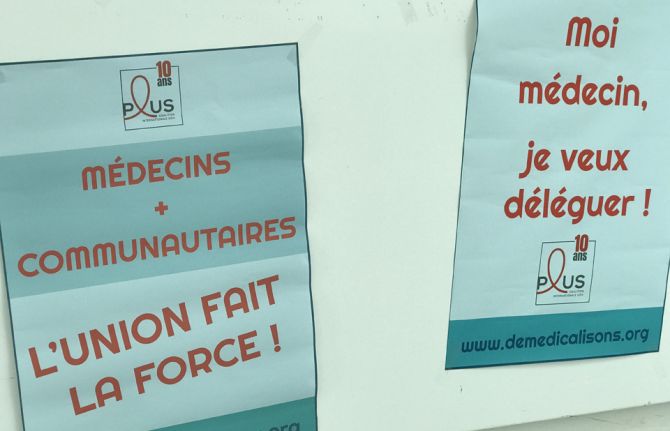
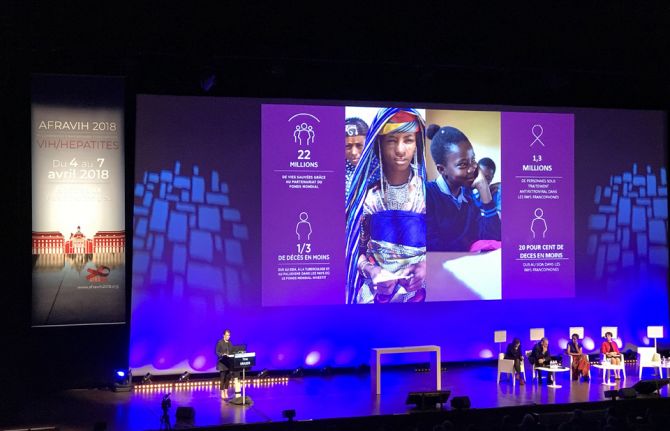
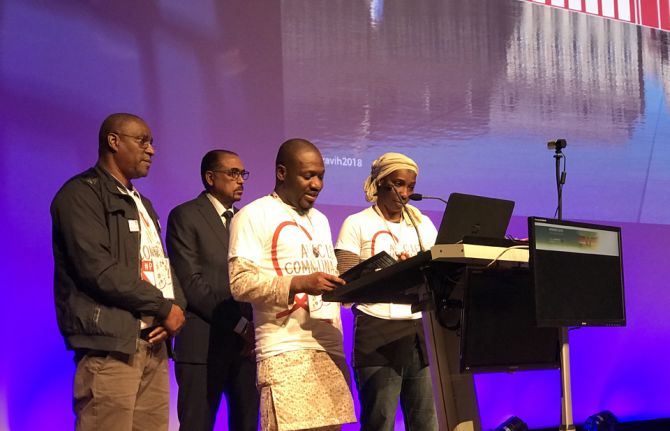
Feature Story
A united rallying cry: Time to make health care systems more flexible and innovative
16 April 2018
16 April 2018 16 April 2018Seven months after launching the catch-up plan in western and central Africa, progress on increasing the numbers of people on antiretroviral treatment continues to lag in the region. Many countries will not reach key targets by 2020 if the current systems remain unchanged.
"Overall we saw a 10% percent increase of people on treatment, which is not enough," said UNAIDS Executive Director Michel Sidibé. "Now, there is even more a sense of urgency."
Mr Sidibé, however, pointed to the success in the Democratic Republic of Congo where there was a clear increase in the number of people living with HIV accessing ARVs. The reasons for the positive trend included civil society and political leadership working closely together as well as community HIV testing and the training of 11 000 health care workers.
"More than ever there is a need to rethink health systems and alternatives for people to access health care," he said.
The call to delegate patient care to communities was a major rallying call during AFRAVIH, the international francophone HIV and hepatitis conference held in Bordeaux, France, early April. Mr Sidibé briefly shared the stage at the opening ceremony with the civil society organisation Coalition PLUS. They declared that the key to success in ending AIDS involved joining forces between doctors and community health workers and giving more leeway to communities to respond to the local needs of their own people.
Under the banner, "De-medicalize" the organisation explained that doctors will never be replaced but that there were too few of them and people living with HIV didn't require acute care.
Coalition Plus' recent report states that governments and the medical practitioners should delegate more tasks to nurses and community health workers. In addition to allowing for more targeted prevention and faster access to treatment, delegation of non-medical tasks would lighten the load on overburdened health systems. West and central Africa represent 17% of the total population living with HIV but 30% of deaths in the region are from AIDS-related illnesses. This is a region, according to UNAIDS and its partners, that can truly benefit from community models of care.
What worries Médecins Sans Frontières (MSF) is the risk of a significant drop in resources for treatment will hamper recent improvements in west and central Africa. This concern stems from the fact that Global Fund estimates a 30% drop in fund allocations to the region for 2018 – 2020 compared to signed HIV grants in the previous allocation period. In 2016, MSF was among the first to sound alarm bells regarding the region's high HIV death toll and the up to 80% of children unable to access antiretroviral therapy. MSF HIV Policy Advisor and Advocacy Officer Nathalie Cartier said that they supported the west and central Africa catch-up plan but that it needed to be fully implemented. "Political will has been promising but now it's time to make it a reality on the ground so that people living with HIV can reap the benefits," she said.
Global Fund supported the catch-up plan and works closely with countries in order to maximize the impact of the investments. They believe that leveraging additional domestic financing for health is crucial to increase country ownership and build sustainable programs.
All the more reason to decentralize healthcare systems and capitalize on innovations to keep health costs down. HIV self-testing, new medicines and high impact strategies involving communities are critical to improving efficiencies. "With point-of-care (POC) testing in communities and homes, delays are minimal between diagnosis and initiating treatment," said Cheick Tidiane Tall, Director of Réseau EVA, a network of pediatric doctors specialized in HIV care. “In the long run, that's a lot of people and resources saved,” he added.
Côte d'Ivoire Infectious and Tropical Diseases professor Serge Eholié couldn't agree more. "Flexible health care systems capitalizing on various innovations makes a lot of sense," he said. Turning to the Minister of Health in the Central African Republic, Pierre Somse, he asked, 'How do you respond?'
Mr Somse, also a trained doctor, said, "We doctors will stay doctors. However, there is a need for us to lean on communities and vice versa." He added, "at the heart of the issue are patients and they are and should always be the priority."
Related

Feature Story
Globo Television visits UNAIDS following Emmy Kids nomination
11 April 2018
11 April 2018 11 April 2018Staff from Globo Television visited UNAIDS headquarters in Geneva, Switzerland, on their way to Cannes, France, for the 2018 Emmy Kids Awards. Globo and UNAIDS were nominated for an Emmy Kids Award in the digital category for the web series Young Hearts—I Just Want to Love, which focuses on a high school romance between a teenager living with HIV and his girlfriend.
The series was a spin-off from Brazil’s longest running soap opera, Malhação—Seu Lugar No Mundo (Young Hearts—Your Place in the World), a production developed and broadcast by Globo. Among several teen love stories in the season, the one between Henrique and Camilla became a hit with the audience. The soap averages a daily audience of 24 million viewers, mainly pre-adolescents and their parents. UNAIDS, an official partner with Globo since 2015, gave technical advice and support to the writers of the show.
UNAIDS, Globo and Gshow produced the web spin-off, which is available on the Globo streaming platform. The five-episode web series became the third most watched original series on the platform, with almost 1 million views.
Michel Sidibé, UNAIDS Executive Director, congratulated Globo, explaining how media plays a key role in stopping HIV stigma and exclusion. He praised the Globo partnership for using edutainment to reach young people with compelling and relevant HIV information.
Emmanuel Jacobina, the writer of Young Hearts—Your Place in the World for the 2015–2016 season and the web series, said that the idea came from a conversation he had with the UNAIDS team about HIV in Brazil. It disturbed him, he said, that despite there being methods for prevention, tens of thousands of people still become infected with HIV each year in Brazil. As a result, the web series, he said, seemed the best place to push the debate further and speak bluntly about relationships, sexuality and HIV.
The Director of Corporate and Social Responsibility at Globo, Beatriz Azeredo, reiterated the company’s commitment to mobilize Brazilian society around major social issues with television series and public service announcements. Globo’s Director of Communications, Sergio Valente, noted Globo’s presence in more than 100 countries and said that it has a 99% reach in Brazilian homes.
Of the three nominees in the digital category, the award went to the Norwegian series Jenter (Young Girls), produced by NRK.
UNAIDS is working towards ensuring that 90% of young people have the skills, knowledge and capacity to protect themselves from HIV and have access to sexual and reproductive health services by 2020.
Quotes
“Teach us the right way to tell stories, because we know how to transform information into entertainment.”
“Globo Television is a bridge to help us remove stigma and prejudice and hopefully change attitudes.”
“Globo Television is a true inspiration, because it has gone a long way in portraying more women as role models and informing people about zero discrimination.”
Region/country
Related

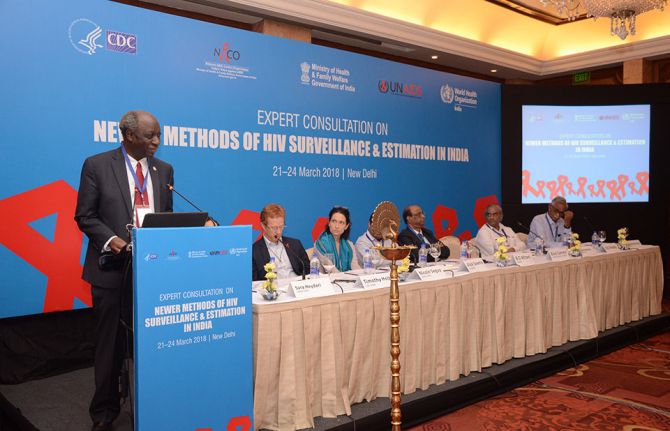
Feature Story
New methods for HIV surveillance and estimates in India
06 April 2018
06 April 2018 06 April 2018Experts from India and around the world recently discussed new ways of carrying out HIV surveillance and making estimates on the HIV epidemic in India.
Opening the consultation, the Director General of Health Services of India, B.D. Athani, said, “Disease surveillance is the stethoscope of a public health professional and an extremely important public health function.”
The consultation heard about in-country pilot projects and other initiatives being planned. Steps being taken to strengthen the quality of data and enable their better use were highlighted, as were efforts that are being made to improve the interface between the various information systems for HIV surveillance.
Technical sessions on HIV surveillance, including the importance of integrated surveillance for HIV, tuberculosis, hepatitis and syphilis, and on making HIV estimates were held throughout the four-day event.
“The use of data is fundamental to enabling an efficient and sustained public health response. Three questions remain critical in this regard: what data shall be collected, how it shall be collected and how it should be used to help the design and implementation of an effective response,” said S. Venkatesh, the Deputy Director General of the Indian National AIDS Control Programme.
During a session on making district-level HIV estimates, the different methods of how estimates could be made were examined. The participants agreed that, for inter-district comparability and consistency, just one method should be used to generate district estimates. Determining the best method would require further analysis of the strengths and limitations of all of them, however.
During the consultation, Bilali Camara, the UNAIDS Country Director for India, noted the importance for the AIDS response of having granular information on locations and populations.
A presentation on key population size estimates included a novel pilot for virtual mapping using social media in an ethical and cost-effective way, which was recognized as the methodology of the future. The consultation also heard that India should collect behavioural information through so-called polling booth surveys—whereby information on behaviours can be collected anonymously—and other innovative approaches.
Sessions on each of the technical areas began with international experts sharing the broad global framework and guidelines. They highlighted approaches adopted by different countries and the practical considerations for each approach. The participants agreed that data from surveillance, estimates and programmes represent different pieces of information that together provide a better perspective on the HIV epidemic and response—each piece is important and should not be seen in isolation.
The consultation was held on 21–24 March in New Delhi, India. It was organized by India’s National AIDS Control Organization in collaboration with UNAIDS, the World Health Organization and the United States Centers for Disease Control and Prevention, whose experts were joined by national experts from the Indian Council of Medical Research institutes and others. Recommendations from the consultation will be compiled into a road map for implementation by the National AIDS Control Programme.
Related information
Region/country

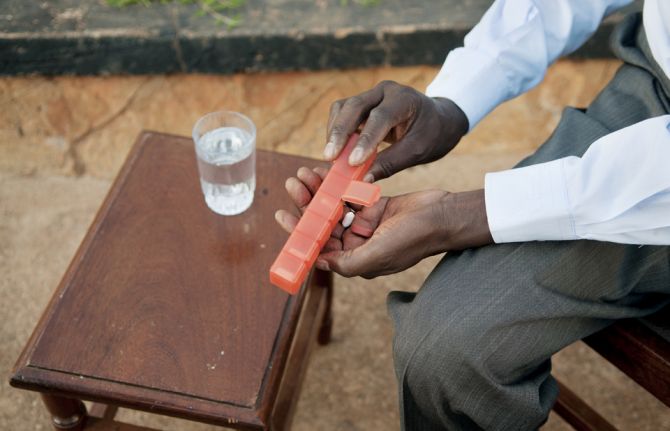
Feature Story
Test and treat showing results in Uganda and Zambia
05 April 2018
05 April 2018 05 April 2018New data show that the test and treat approach is having a significant impact on the number of people accessing HIV treatment. After Uganda adopted such an approach in 2017, according to government data the number of men newly initiated on treatment rose from 60 000 in 2016 to 80 000 in 2017, while the number of women newly initiated on treatment increased from 107 000 to 138 000 in the same time period.
Just as importantly, the treatment gap between people newly diagnosed as HIV-positive and people newly initiated on HIV treatment has shrunk for both men and women in Uganda. The gap for men narrowed by 45%, from 33 000 in 2016 to 18 000 in 2017, while for women it narrowed by 60% in the same time period, from 48 000 to 19 000. Although more women are testing HIV-positive than men, the HIV treatment gap is closing for both women and men.
Similar trends were observed in Zambia after the start of its test and treat policy in 2017. Zambia has seen the number of people newly initiating HIV treatment increase from 23 000 in the first quarter of 2016 to 45 000 in the final quarter of 2017, according to government data—an increase of 65%.
Through a test and treat approach, if a person tests HIV-positive, he or she is immediately enrolled on HIV treatment. Before the advent of test and treat, people living with HIV had to wait for their CD4 count to drop to a particular level before starting treatment.
Both these effects of test and treat were seen after the recent launches of so-called situation rooms in both Uganda and Zambia. The situation rooms are interactive software platforms that centralize data for HIV and other diseases to improve tracking of the diseases and programming in order to reach more people with services.

